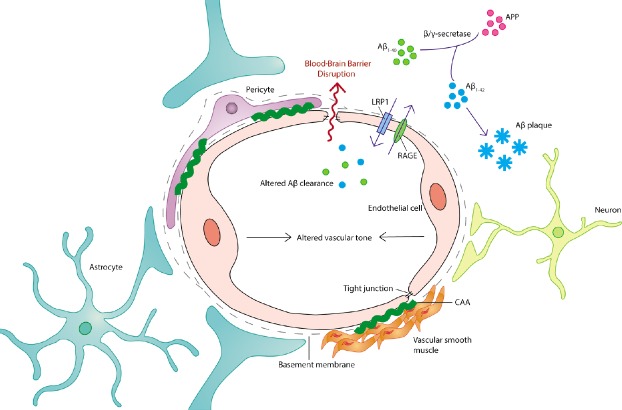Figure 1.
The neurovascular unit in Alzheimer’s disease.
The neurovascular unit is the primary structural and functional unit for vascular organization in the mammalian brain. It is comprised of several cell types and non-cell components including endothelial cells, perivascular pericytes, vascular smooth muscle cells, basal lamina, and closely associated astrocyte end-feet and interneuron terminals. Cerebral endothelial cells associate via tight junctions to form a selectively permeable BBB. Alzheimer’s disease is associated with dysfunction across the vasculature, including cell morphological changes and mortality, inflammatory activation, altered expression of receptors and transporters involved in Aβ clearance, the deposition of Aβ as vascular plaques (CAA), alterations in vascular tone, dysregulated endothelial junction formation and aberrant increases in BBB permeability. Therefore, there are several potential vascular targets for therapeutic intervention in Alzheimer’s disease. Aβ: β-Amyloid; APP: amyloid precusor protein; BBB: blood-brain barrier; CAA: cerebral amyloid angiopathy; LRP-1: lipoprotein-related protein-1; RAGE: glycation end-products.

